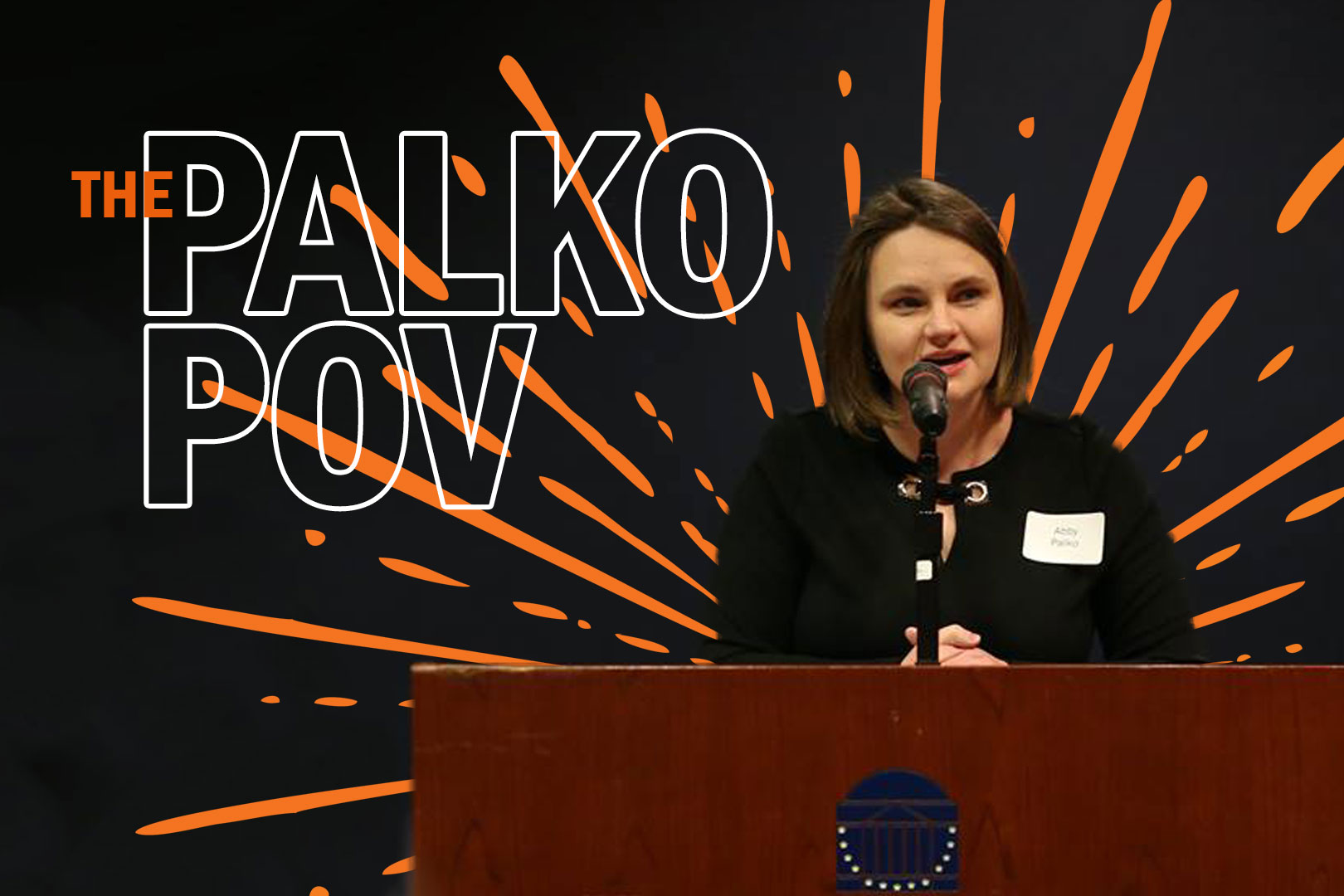
In my June POV, I talked about disparities in birth outcomes across the globe, noting that “a disproportionate number of women in the US who die from pregnancy or childbirth-related causes are women of color, poor women, women without access to healthcare.” World Health Organization data shows that both perinatal mortality rates and maternal mortality rates range widely. Perinatal morality rates measure fetal and newborn deaths (fetal deaths at 22 weeks or more gestation and newborn deaths up to 7 days after birth). Maternal mortality rates measure the rates at which women die from pregnancy- or childbirth-related complications.
Last month, the Women’s Center hosted Rachel Zaslow as the third speaker in our annual Beverly Cobble Rodriguez Lectureship. Rachel is the executive director of Mother Health International, a nonprofit organization that works to reduce maternal, infant and child mortality rates. They build Earth Birth Centers, country-specific, locally sustained maternity and resource centers staffed by local midwives. In the process, they develop culturally competent protocols to support traditional midwives. Rachel’s talk, “Why do women die? Maternal Mortality from Uganda to Charlottesville” offered an inspirational look at ways to blend traditional and western approaches to medicine.

The key to an effective integration of traditional and western approaches is cultural competency, specifically the understanding that people have different ways of knowing and experiencing their reality. When western aid workers drop in, provide short training in western-developed procedures, and then leave without establishing a sustainable system for implementing these procedures, there are two predictable, and tragic, outcomes. The new procedures are only partially implemented, failing to achieve the desired outcomes and at times actually creating worse outcomes for women and their babies. And the older, traditional knowledge can be lost in the efforts to replace it. Both of these consequences defeat everyone’s best efforts to achieve better outcomes. We are not well served by efforts to eradicate traditional birthing practices in favor of a medicalized model.
I want to be clear that I do not hold moral objections to western medicine. Modern obstetrics and technology enabled my own doctor to diagnosis and successfully manage my complete placenta previa, saving my daughter’s life and possibly my own. I know the value of a healthcare facility and want all women to have access to the care they need during childbirth. But not every childbirth needs medical intervention. And more importantly, women have the right to bodily autonomy. It is especially imperative that we champion this right in instances where disparities in outcomes have been traced to racial biases and/or geographic differences.
 One of the innovations that Rachel described is the Heart String, [pictured to the right] a bracelet of color-coded beads that enables birth attendants to assess fetal heart tones. This tool is innovative in blending the traditional practice of moon beads to track menstrual cycles with the allopathic medical knowledge that fetal heart tones outside of a particular range indicate fetal distress and the need for intervention. The birth attendant listens to the fetal heartbeats for a minute and counts off a bead for every beat. If the count falls in the green beads, the baby’s heartbeat is strong. If it falls in the white, the heartbeat is dangerously low. If it falls in the red, it is dangerously high. In those instances, the birth attendant knows that medical intervention is necessary.
One of the innovations that Rachel described is the Heart String, [pictured to the right] a bracelet of color-coded beads that enables birth attendants to assess fetal heart tones. This tool is innovative in blending the traditional practice of moon beads to track menstrual cycles with the allopathic medical knowledge that fetal heart tones outside of a particular range indicate fetal distress and the need for intervention. The birth attendant listens to the fetal heartbeats for a minute and counts off a bead for every beat. If the count falls in the green beads, the baby’s heartbeat is strong. If it falls in the white, the heartbeat is dangerously low. If it falls in the red, it is dangerously high. In those instances, the birth attendant knows that medical intervention is necessary.
For birth attendants who are illiterate, the Heart String enables them to successfully provide culturally appropriate care that dramatically increases birth outcomes. In its 2014 report “Ending Newborn Deaths,” Save the Children estimates that 2.6 million stillbirths occurred worldwide in 2012. In almost half of these stillbirths, the baby’s heart stopping beating during labor. A tool like a Heart String and a trained birth attendant can literally make the difference between life and death.
Rachel reminded us that this is not just a Global South problem: the infant mortality rate in Charlottesville spiked to 9.1/1000 overall in 2010, but nearly 30/1000 for babies born to African American mothers. One factor in this significantly higher rate is a lack of access to prenatal care. Jeanne Alhusen and Beth Epstein in the University’s School of Nursing, along with their colleagues at Johns Hopkins School of Nursing, Kelly Bower and Phyllis Sharps, find the same result in their research, noting, “ethnic and minority women continue to encounter negative experiences in the health care setting as a result of their race”. They document a number of disparities in outcomes for mothers of color, including higher infant mortality rates, increased rates of being small-for-gestational-age, higher preterm birthrates, and more low birth weights.
 In their study, they identify a significant challenge in addressing these adverse birth outcomes: “Despite significant research in this area, the reason there are racial disparities in birth outcomes remains largely unknown.” Among potential factors, they identify the higher level of stress women of color experience over their lifetime in comparison with white women. One chronic stressor is racial discrimination, and they suggest this might be a risk factor for these disparities. The good news, though, as they remind their readers, is that health care providers can promote the reproductive health of ethnic and minority women before pregnancy and childbirth by adopting an approach that considers a woman’s entire lifespan and not just her current life stage. Greater emphasis on preventive and preconception care can promote favorable birth outcomes. As Rachel reminded her audience, trust between woman and provider is a crucial factor in the effectiveness of these efforts.
In their study, they identify a significant challenge in addressing these adverse birth outcomes: “Despite significant research in this area, the reason there are racial disparities in birth outcomes remains largely unknown.” Among potential factors, they identify the higher level of stress women of color experience over their lifetime in comparison with white women. One chronic stressor is racial discrimination, and they suggest this might be a risk factor for these disparities. The good news, though, as they remind their readers, is that health care providers can promote the reproductive health of ethnic and minority women before pregnancy and childbirth by adopting an approach that considers a woman’s entire lifespan and not just her current life stage. Greater emphasis on preventive and preconception care can promote favorable birth outcomes. As Rachel reminded her audience, trust between woman and provider is a crucial factor in the effectiveness of these efforts.
One of Mother Health International’s projects is the Sisters Keeper Collective, which provides birth attendants to women of color in Charlottesville, Albemarle, Fluvanna, and Nelson counties. Across cultures and time, women have usually given birth in the supportive presences of their female relatives and friends, attended to by trusted members of their community. While the 20th century medicalization of childbirth in industrialized countries has conferred advantages and improved outcomes for some demographics, the loss of this communal support was a trade-off.
The women who serve as birth sisters with the Sisters Keeper Collective bridge the divide between a traditional understanding of support in childbirth and a medicalized model that has tragic racial disparities in outcomes. They help to build trust between the woman and her medical care providers. These birth sisters provide prenatal support to help expectant mothers navigate their prenatal care. They are a comforting presence throughout labor, offering encouragement and advocating for the mother’s needs. They are also present for the “fourth trimester” to reassure mothers as they establish relationships with their newborns. Through a model of care that incorporates traditional approaches into a medical setting, the Sisters Keeper Collective serves the women of the Charlottesville area who face the greatest barriers to a safe, empowered birth.
To address the inherited legacies of systemic racism, our community must pay attention to the ways that structural inequalities and unequal access to resources powerfully impact women’s ability to give birth safely and mother as they want to. Lived experience and scholarly research show us that an answer lies in honoring and implementing effective practices from both traditions. Women who are empowered to use culturally appropriate practices and have access to medically necessary interventions have better outcomes. Rachel’s work reminds us that it doesn’t just take a village to raise a child. It takes a village to safely birth a child.

